Ichthyosaurus was a marine reptile that dominated the Mesozoic seas from the Triassic to the Late Cretaceous period. Resembling modern dolphins, they represent a prime example of convergent evolution, adapting optimally to life in vast oceanic environments. Their fascinating discovery was first revealed by excavations in 19th-century England, shedding unprecedented light on prehistoric marine life.
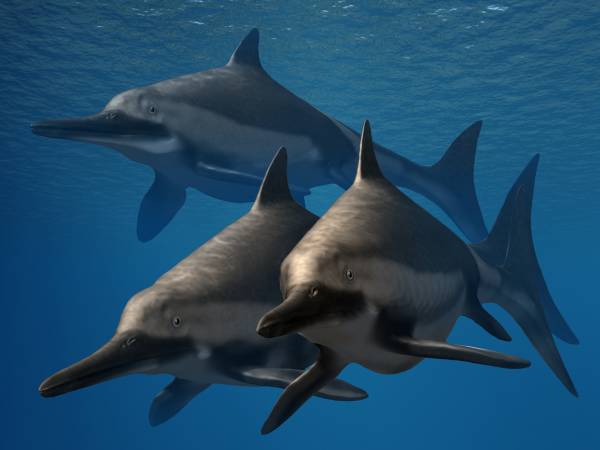
Understanding Ichthyosaurs
Ichthyosaurs were not dinosaurs but a distinct order of Mesozoic marine reptiles. The name comes from the Greek words for “fish” and “lizard”. Weird combination, I know. They first appeared approximately 250 million years ago and later diversified into various species, some exceeding 20 meters in length. Fully adapted to aquatic environments, their limbs evolved into flippers, and their bodies became streamlined for efficient swimming. Their large eyes suggest deep diving capabilities for hunting prey. Moreover, they were among the first vertebrates to exhibit live birth (viviparity or ovoviviparity).

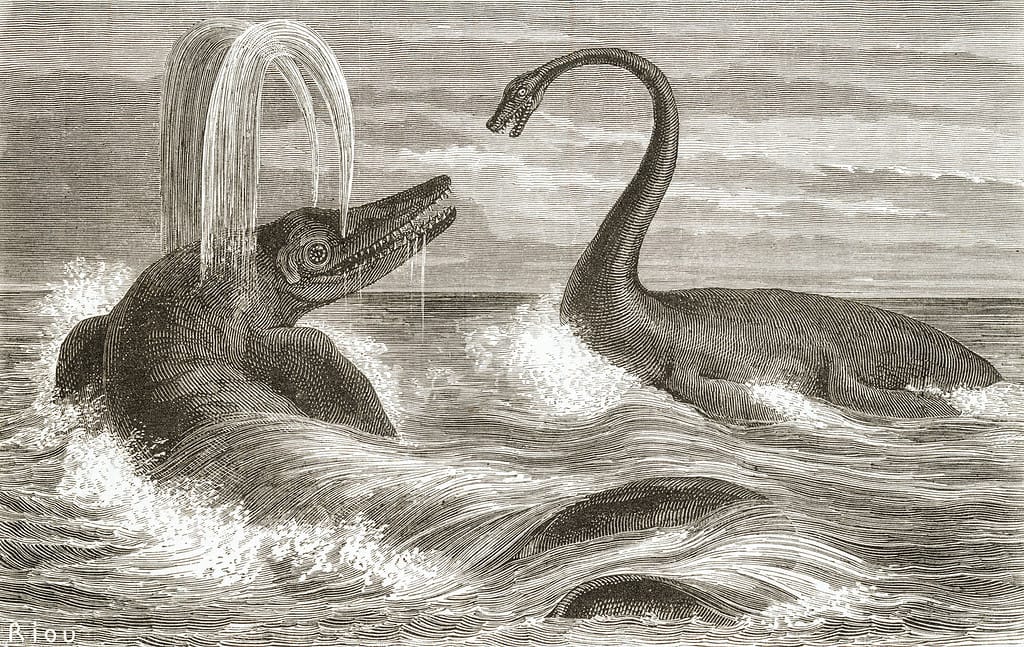
Discovery and History
Welsh naturalist Edward Lhuyd was the first to identify Ichthyosaurus in 1699. However, he misidentified the fossils as a fish. It was not until the early 19th century that a more accurate interpretation emerged, attributing these remains to large, extinct reptiles. Pioneering figures like the amazing Mary Anning, a fossil collector and paleontologist from Victorian England, played a crucial role in this shift by uncovering significant fossils along the Jurassic Coast that would later inform the work of scientists like Richard Owen and Henri Marie Ducrotay de Blainville.


The term “Ichthyosauria” was later coined in 1834 by Karl Dietrich Eberhard Koenig. The ambiguous term “fish lizard” reflected the confusing nature of these early fossils. We now know this was no fish but a marine reptile, but the name stuck. Subsequent finds in Germany included well-preserved fossils with soft-tissue remains providing enticing details of its appearance.
The Anatomy of a Sea Dragon
Ichthyosaurus had unique adaptations for life in the ocean, featuring physical traits that optimized their survival in marine environments. Their body plan mirrored modern dolphins, an example of convergent evolution where unrelated species develop similar traits. Another example of convergent evolution is flight in birds and bats. Within the ichthyosaur clade, sizes varied widely, ranging from 1 to over 20 meters long. However, the type species, Ichthyosaurus communis grew only about 3.3 meters long.

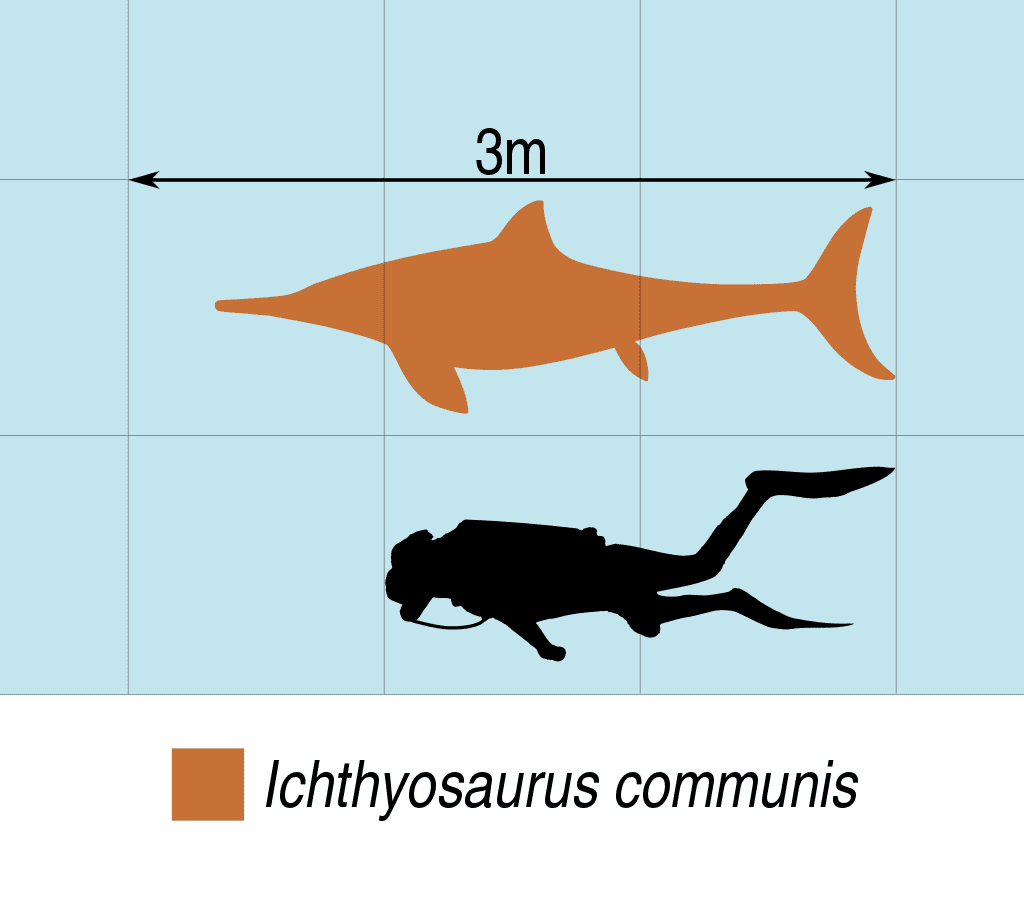
Their skeletal structure was robust, with a vertebral column extending into the tail fin, supporting a powerful swimming mechanism. This tail fin along with a possible dorsal fin in some species provided stability and speed in the water. Their heads were equipped with sharp, conical teeth set in strong jaws, capable of grasping slippery prey. Large, forward-facing eyes suggest that ichthyosaurs were visual hunters, capable of deep-diving. The eye sockets were reinforced by bony rings, protecting the eyes under deep water pressure.

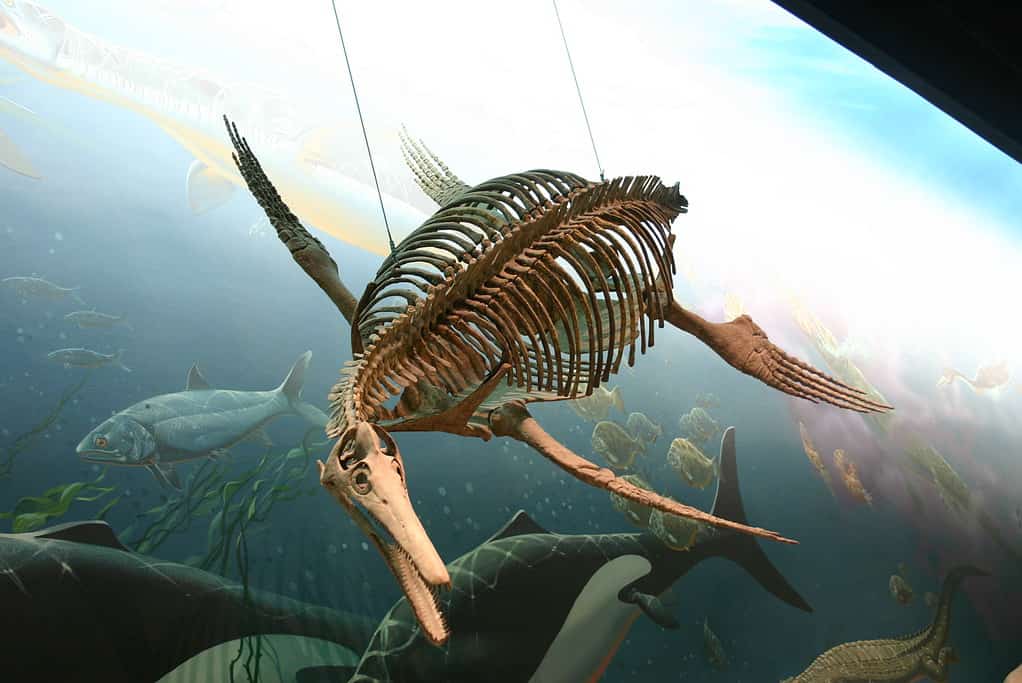
Remarkably, ichthyosaurs were among the first vertebrates known to have given birth to live young. This trait is confirmed by fossil evidence of pregnant specimens with embryos inside. Live births likely contributed to their success in diverse aquatic environments, enabling populations to spread across vast oceanic territories during the Mesozoic era.
Habitat and Behavior
Ichthyosaurs inhabited a wide range of marine environments, from shallow coastal waters to the open ocean. Their presence in diverse geographic locations, from the Arctic to the equator, suggests they successfully colonized various marine ecosystems during the Mesozoic era.
Diet analysis from fossilized stomach contents reveals a predominantly carnivorous diet, including fish, cephalopods, and possibly smaller marine reptiles. Ichthyosaurus’ large eyes and robust skeletal structure suggest it was capable of deep diving. This trait allowed them to withstand the deep water pressure and exploit a range of ecological niches.

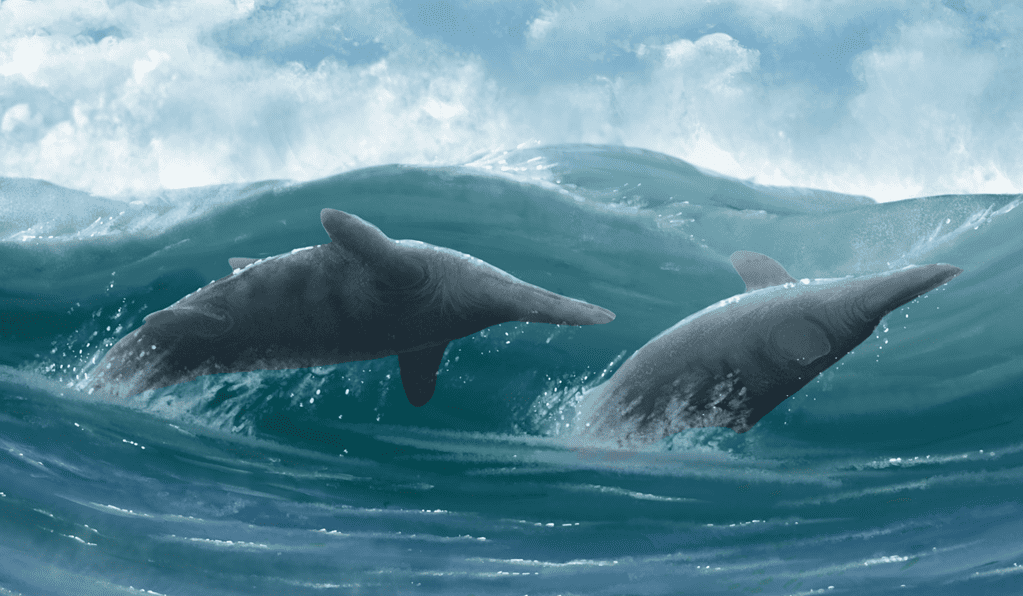
Ichthyosaurus may have engaged in social behaviors similar to modern marine mammals. Groupings of fossils indicate possible pod behavior or mass-stranding events, hinting at complex social structures. Additionally, remains of juvenile ichthyosaurs alongside adults in certain fossil beds may suggest parental care or group living arrangements.
Ichthyosaurus’ Relatives and Their Niches
The Ichthyosauria clade is very diverse and rich in many species, each occupying different ecological niches. The following key ichthyosaur genera illustrate the group’s adaptability and ecological diversity:
Shonisaurus was the largest ichthyosaur. Its massive size suggests a diet of larger prey or possibly filter-feeding, similar to contemporary whales. The presence of such giants indicates ichthyosaurs’ role as apex predators in their ecosystems.

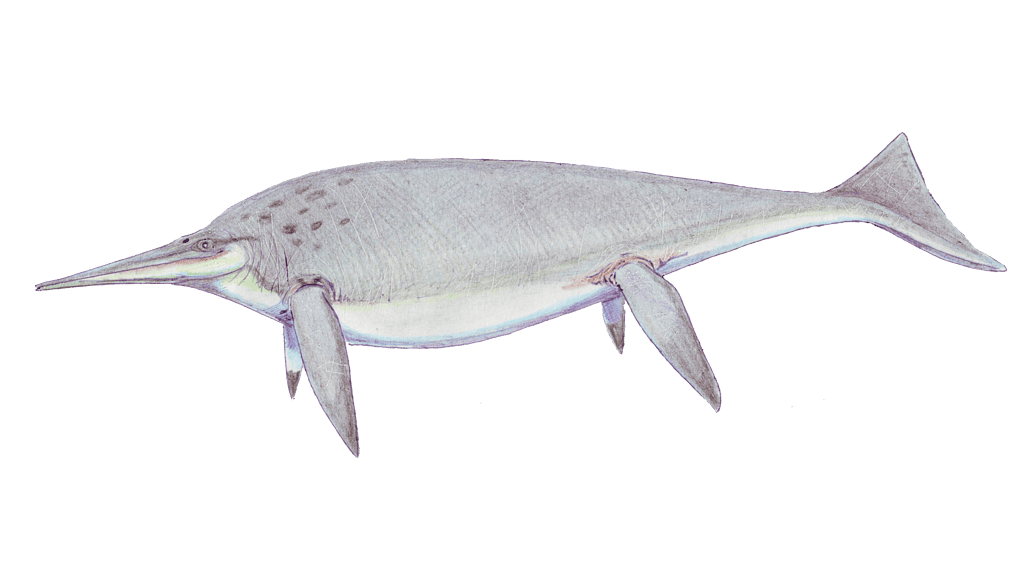
Stenopterygius, known for its narrow flippers, likely pursued fast-swimming prey in open waters. Its build suggests a lifestyle akin to modern dolphins, excelling in pursuit-predation.

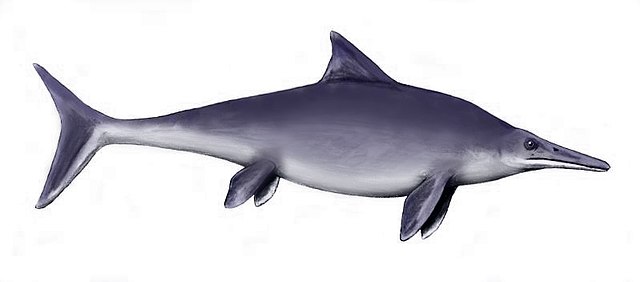
Ophthalmosaurus had exceptionally large eyes, which probably helped it to locate prey in deep or murky waters.

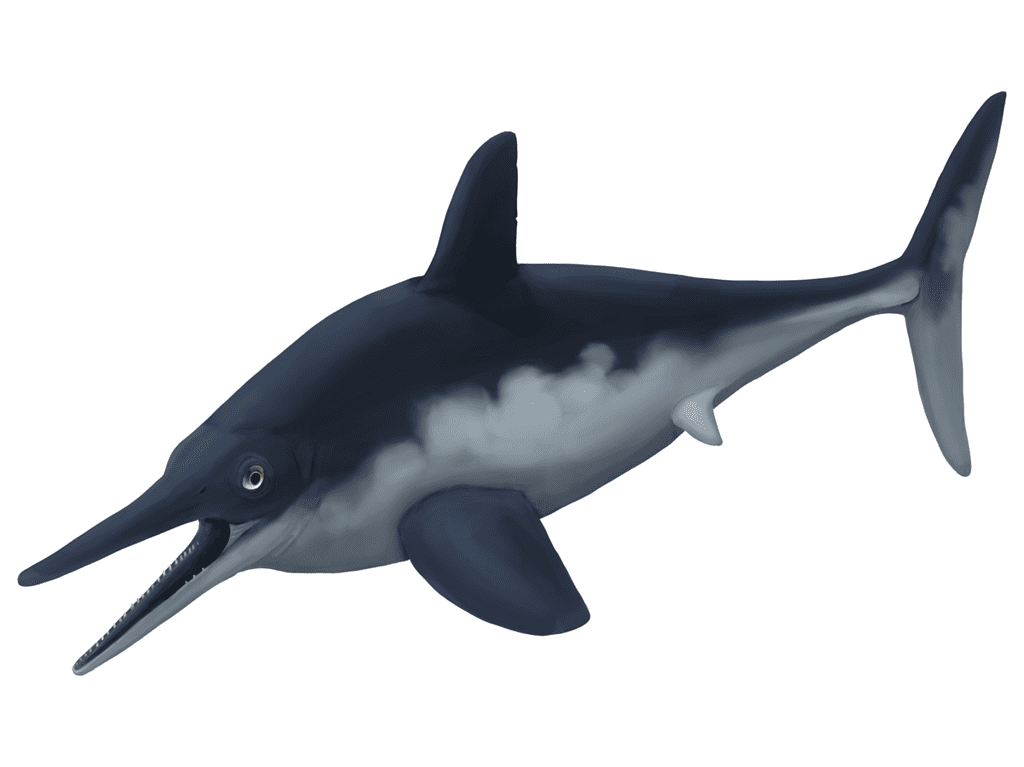
Temnodontosaurus is another large genus with robust teeth and powerful jaws. It likely preyed on other marine reptiles and large fish, including other ichthyosaurs. This genus’ hunting strategy might have involved ambush predation, using stealth and power in a sudden rush to capture prey.

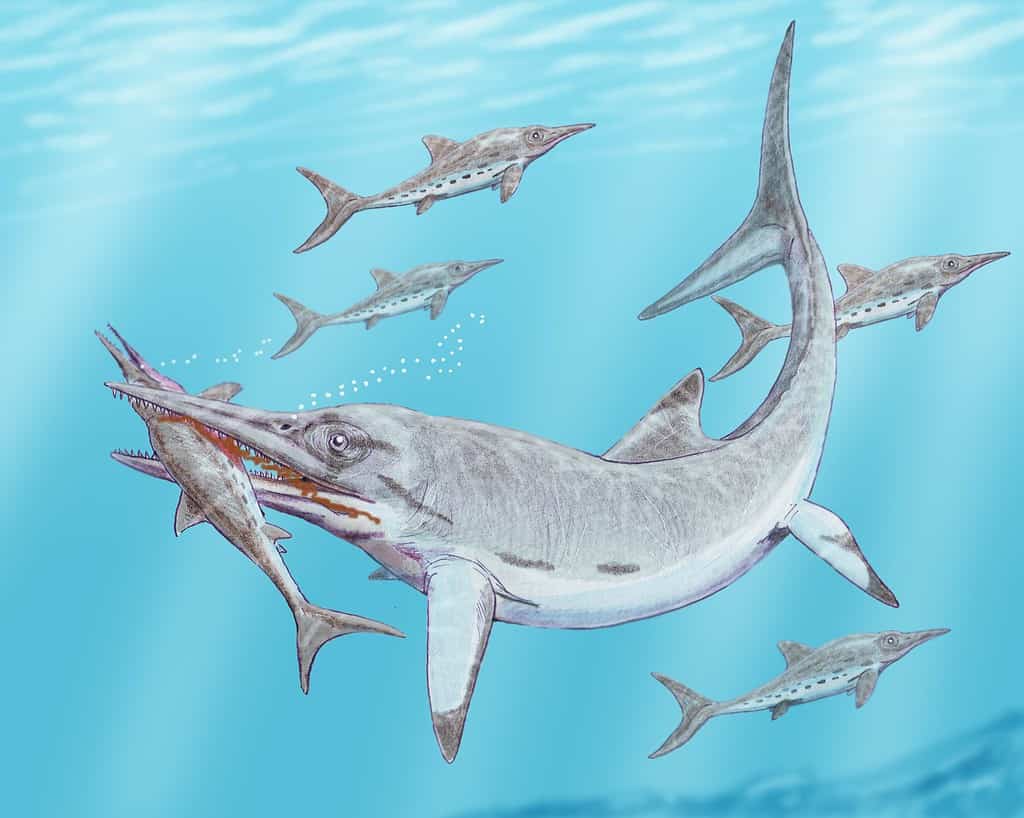
Fossil Evidence
Ichthyosaur fossils have been found across all continents. These remains range from isolated bones to complete skeletons, including soft-tissue imprints that offer rare insights into their anatomy. These soft-tissue fossils reveal details such as the outline of dorsal fins and the skin structure. They indicated a streamlined body covered in smooth, scaleless skin, akin to modern marine mammals. This adaptation would have minimized drag, facilitating swift hydrodynamic movement. Additionally, fossilized stomach contents provide direct evidence of ichthyosaur diet, confirming their carnivorous nature.
Perhaps the most remarkable fossils of this clade are those of pregnant ichthyosaurs, with embryos inside the body cavity. These findings confirm live birth in ichthyosaurs and suggest a complex reproductive behavior. A basal Ichthyosaur specimen, Chaohusaurus, was found with embryos positioned for head-first birth. While discoveries of more evolved pregnant ichthyosaur specimens, Stenopterygius, had embryos positioned for tail-first birth. This adaptation helps newborns breathe until the very last moment before they are born into the ocean.

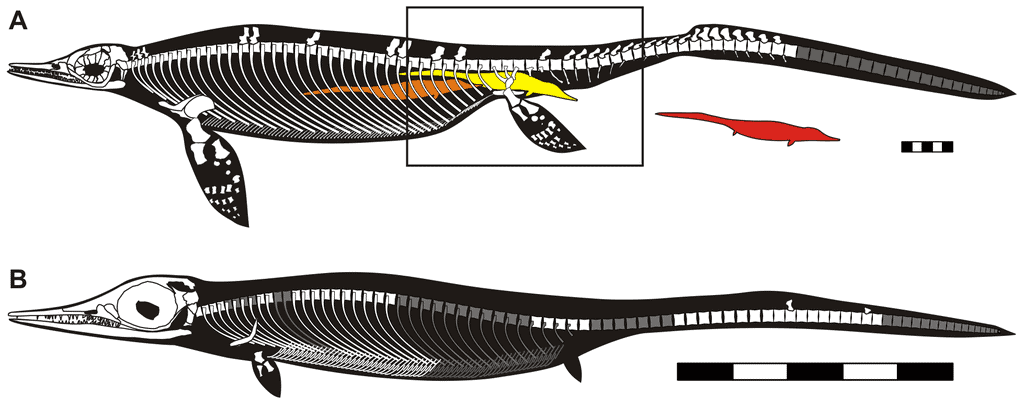

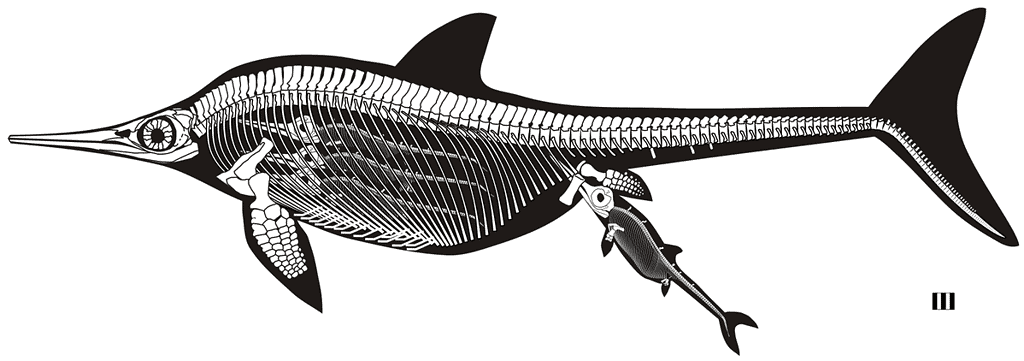
Ichthyosaur fossils also bear marks of pathologies, such as healed injuries and signs of diseases. Such discoveries have helped scientists understand their lifespan, growth rates, and health conditions.
Extinction
The extinction of ichthyosaur occurred approximately 90 million years ago. This demise, predating the end-Cretaceous mass extinction that wiped out the dinosaurs, suggests a complex interplay of factors rather than a single catastrophic event.

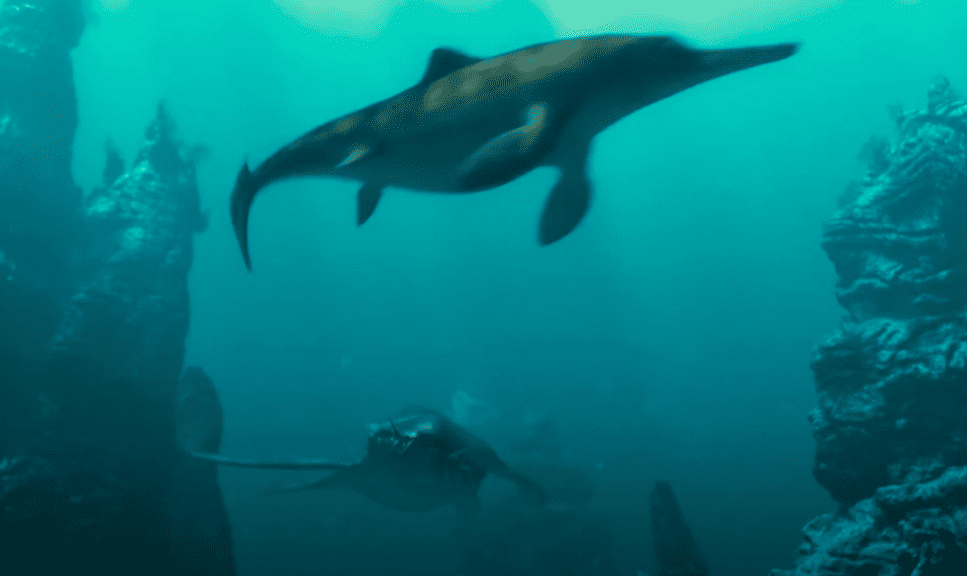
Environmental changes, including shifts in sea levels and temperature fluctuations, likely played a critical role. These alterations could have affected prey availability and habitat conditions. Additionally, the emergence of new predators and competitors, such as Mosasaurus and advanced teleost fish, introduced new pressures that may have contributed to their decline.
Ichthyosaurs in Popular Culture
Although not as famous as the menacing mosasaurs, ichthyosaurs have had their share of appearances in various popular media:
In “Dinosaurs: Giants of Patagonia” two Ophtalmosaurus, a genus of ichthyosaur, are featured preying on a fish bank. A large Liopleurodon breaks off the duo, chasing them away.
“Ice Age: The Meltdown” humorously includes an ichthyosaur-like antagonist. Two marine predators are brought back to life after being unfrozen by global rising temperatures. They hunt the protagonists throughout the movie as all the ice is melting into a big ocean. Although the creature is more crocodilian in nature than ichthyosaur, people tend to refer to it simply as the Ichthyosaurus.

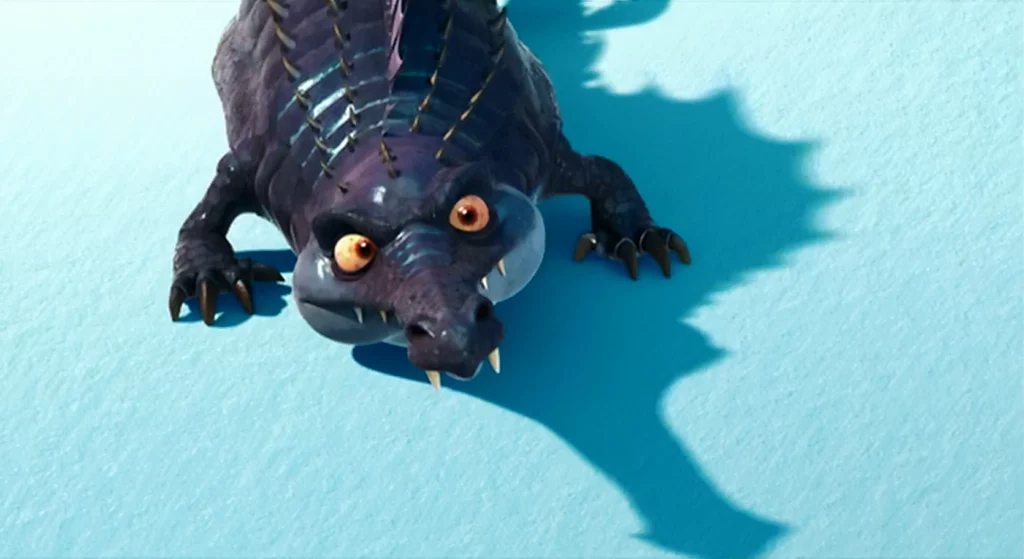
“David Attenborough’s Natural History Museum Alive” brings Ichthyosaurus to life with cutting-edge CGI, comparing it to the modern dolphin. The documentary focuses on the two species’ convergent evolution.
Ichthyosaurus also appears in the video game “Jurassic World Evolution”, showcasing its life in fabulously designed marine exhibits. Players can manage these ancient marine reptiles, simulating their habitat needs and behaviors.

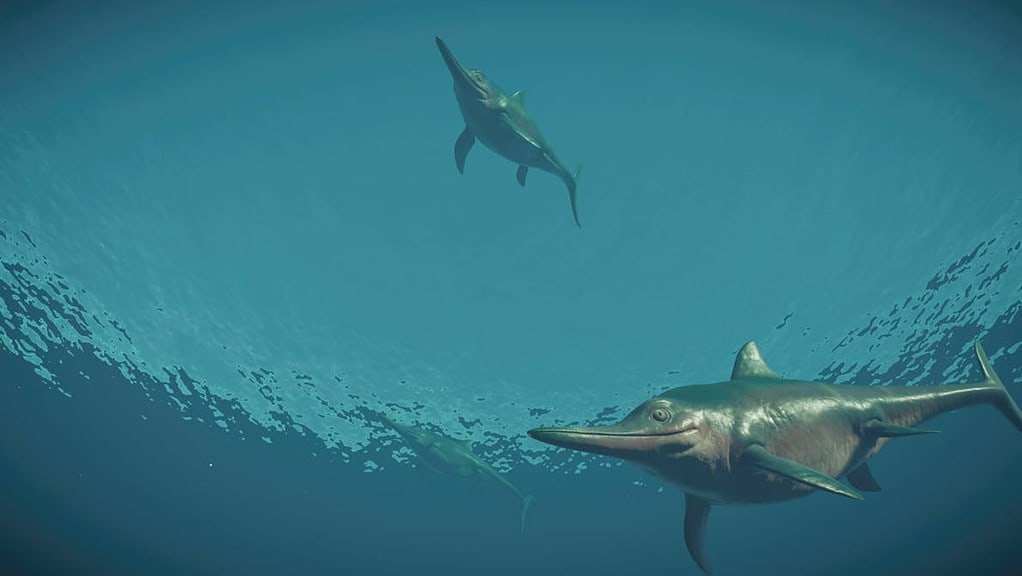
PBS Eons, a web series, goes into greater detail in two episodes about the great ichthyosaur clade. The two episodes present the ichthyosaurs in the same manner as this article, spoiler alert. But I strongly recommend you check them out!
Thanks for your feedback!
